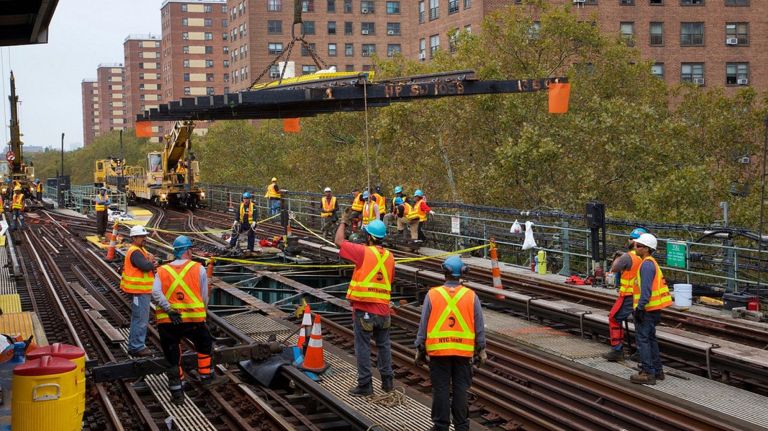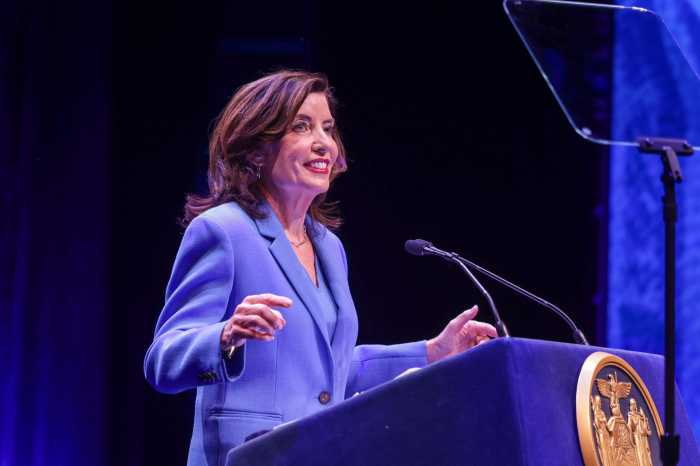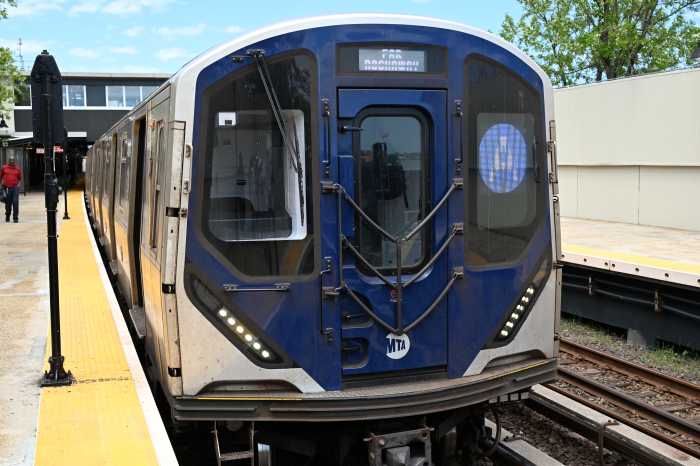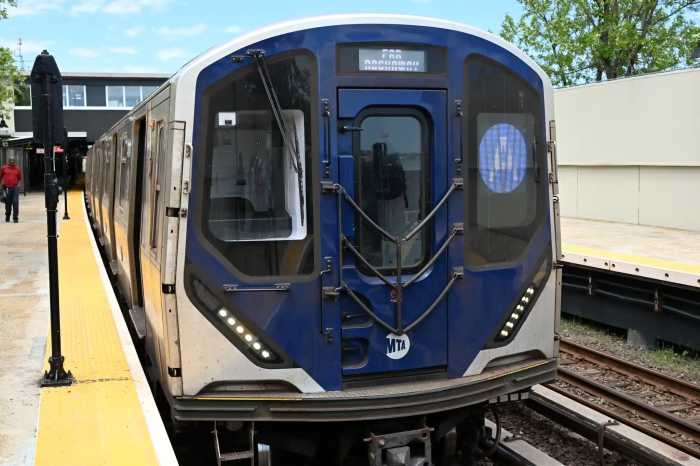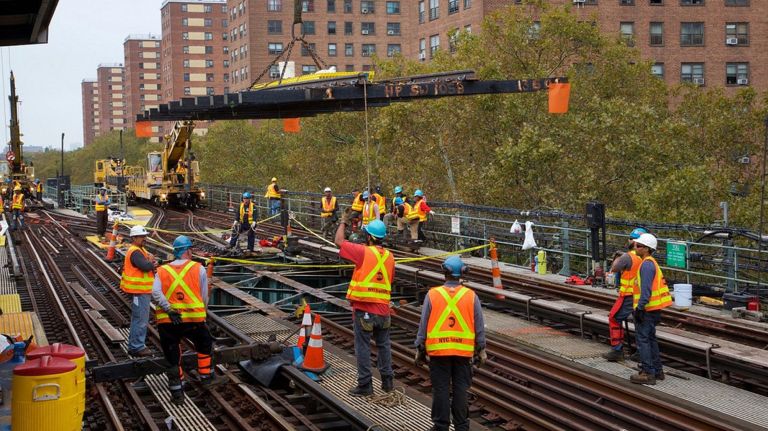
Modernizing the subway’s ancient signal system and greatly improving wheelchair accessibility will be key priorities for the MTA’s next proposed five-year spending blueprint.
The majority of the $51.5 billion capital plan — the MTA’s program for major projects between 2020-2024 — will be dedicated to its struggling subway and bus network, according MTA officials who briefed reporters Monday.
The plan represents a 70% increase from the current five-year plan, an expansion officials portrayed as a firm commitment to improving the region’s mass transit and related infrastructure.
“The proposed capital plan we are outlining this morning is a historic transformational plan for our customers,” said MTA Chairman Pat Foye during the briefing at MTA headquarters.
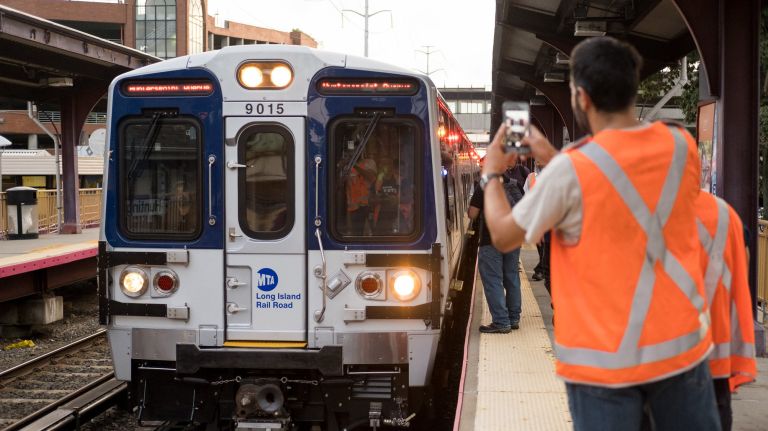
The transit authority, which notoriously overspends on delayed projects, will have to fight to secure funding from city, state and federal administrations as just $25 billion of the plan is guaranteed through dedicated revenues, such as taxes and tolls from Manhattan’s forthcoming congestion pricing program.
The $40 billion in the plan earmarked for city transit alone would pay for the first half of NYC Transit President Andy Byford’s Fast Forward vision to bring New York’s subway and bus network into the 21st Century. Of that money, $7.1 billion would be spent on replacing the signal systems on six lines with a modern, computerized equivalent known as Communications-Based Train Control — the industry standard for subways around the world.
For more than a year Byford has championed the technology — currently in use on the L and 7 lines — claiming it would markedly increase the number of trains that could daily traverse the system. An upgrade means shorter waits and fewer delays due to “signal problems,” Byford has argued.
The MTA will also bring 70 additional stations into compliance with the Americans with Disabilities Act. The stations would be identified with goal of riders never being more than two stations away from an elevator — another Fast Forward initiative. The MTA has for years been shamed for its widely inaccessible subway system. Only about a quarter of its stations are wheelchair accessible.
“I’m ecstatically happy. I mean, this could not be better,” said Byford, who is ultimately pushing for a fully accessible subway system. “This plan exceeds my wildest expectations.”
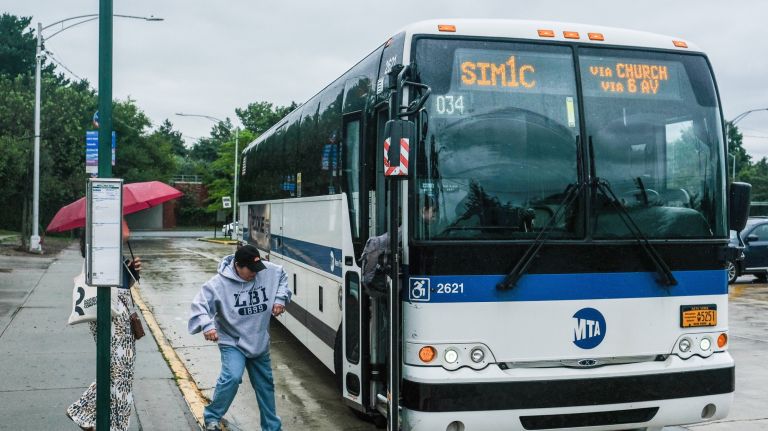 ” class=”wp-image-136414340″/>
” class=”wp-image-136414340″/>Photo Credit: Vincent Barone
Monday’s announcement was light on details, for example failing to name which 70 stations would be tapped, but MTA spokesperson Tim Minton said more details will be released this week.
The plan would also fully fund the estimated $6 billion next phase of the Second Avenue subway, which would extend what is now the Q’s northern branch from 96th Street to 125th Street, with additional stops at 106th and 116th streets.
Some of the expected funding fight will center on convincing officials the authority can be responsible stewards of taxpayer money. Capital plan projects are typically not completed within five years and could take years longer. Janno Lieber, the MTA’s chief development officer, said the goal is to allocate the funding within five years and admitted he could not guarantee the projects would be completed by then.
“I’m not Joe Namath,” he joked — before noting that the MTA does plan to have its subway lines re-signaled within the five-year window.
“Right now in the current capital program … we’re three-and-a-half years into that program and we have 75% of the money, excluding the Second Avenue subway,” Lieber said. “The construction of some of these big projects definitely takes more than five years. The standard is [monetary] commitments. We’re on it.”

Aside from the Second Avenue subway extension and railroad projects such as East Side Access, the MTA is not planning any new subway expansion despite rapidly growing needs across the city. Polly Trottenberg, the city’s transportation commissioner and former MTA board member, said earlier this year that the MTA “should be opening three subway stops every year.”
The authority, however, has been hindered by high construction costs, which advocates and experts believe are wildly out of step with prices for similar projects in cities like Paris and London. Lieber pushed back on those criticisms, however, saying there were a “lot of things that make New York different.”
“We have to have a longer conversation about the comparisons to other stations,” Lieber said. “I’ll tell you this: One of the reasons that we have expensive subways is that we comply with the fire code, which requires you to get people out … of the station at a certain pace. Other systems, which run trains that have fewer people on them, don’t have some of the same costs associated.”
To close the funding gap, the MTA is looking to the federal government to provide $10.7 billion in funding and for the state and city to pitch in another $3 billion each. Another $9.8 billion would stem from borrowing via bonds.
The last capital plan brought a bitter funding fight between Gov. Andrew Cuomo and Mayor Bill de Blasio in 2015, with the state eventually promising more than $8 billion and the city promising $2.5 billion.
Foye argued that the mayor should also be on board because of the sizable commitment to New York City Transit. And Cuomo said in a statement that he supports the funding split between the city and the state.
"We have secured $25 billion during this year’s legislative session that will go directly toward the MTA’s capital needs outlined in this plan," Cuomo said, "and I support an additional State investment of $3 billion, to be matched by the City, that will go toward making our subways more accessible."
Another obstacle could be the Trump administration, which has not been friendly toward mass transit projects, particularly in New York City. The MTA is still fishing for the $500 million it requested to fund a portion of the Second Avenue subway’s second phase in the current capital plan.
“Seven [billion] and change of the 10 [billion] is based on federal formulas, etc., consistent with what we’ve got,” said Foye. “These are reasonable numbers, and these are projects, frankly, of national significance.”
A spokesman for the Federal Transit Administration said the agency “respectfully declines to comment.” De Blasio’s office said in a statement it was still evaluating the plan.
“It is imperative that the subways run on the time. We are reviewing this plan to ensure that it helps get New Yorkers moving and that taxpayer dollars are used responsibly," said mayoral spokesman Seth Stein. "We will have more to say soon."
In recent weeks and months advocates have pushed for a Fast Forward-focused capital plan like the version announced Monday — and most were pleased with its focus.
"I think the MTA realized that this is the moment. I think that we have hope that this is possible, but certainly there’s going to be a lot of work to be done," said Daniel Coates, the director of campaigns and organizing at the Riders Alliance.
Riders Alliance and others have also called for more accountability and transparency around the plan — including a user-friendly project tracker so that the riding public could easily monitor progress. The authority tends to complete capital plan projects years after their time frames, spending on average around $4.9 billion annually on capital projects since 2010, according to an analysis from the good government group Reinvent Albany.
That pace would have to significantly increase in order for this proposed plan to be completed in a timely manner, said Rachael Fauss, a senior research analyst at the organization. She criticized the MTA’s announcement Monday for not including a full draft of capital spending. The authority is also late on releasing its two-decade to-do list, known as its 20-Year Needs Assessment, which is supposed to be released in advance of the capital plan to help craft its priorities.
"If the MTA is really committed to tranparaency they would release the draft capital plan as soon as possible. An 11-page slideshow is just not a capital plan," said Rachael Fauss, the group’s senior research analyst.
The MTA’s board is expected to vote on the capital plan next Wednesday, with plans to advance it to the Capital Program Review Board by Oct. 1, 2019 for a vote on adaptation.
MTA’s six subway lines to receive a signal overhaul in its next $51.5 billion capital plan:
- Lexington Avenue (4,5,6 lines)
- Queens Boulevard (E, F, M R lines)
- Astoria Boulevard (N, W lines)
- Fulton Street (A, C lines)
- Crosstown line (G)
2020-2024 Capital plan spending breakdown:
- $37.3 billion: New York City subways
- $3.5 billion: New York City buses
- $5.7 billion: Long Island Rail Road
- $4.7 billion: Metro-North Railroad
- $. 3.3 billion: Bridges & Tunnels
Subway projects
- $7.1 billion: signal modernization
- $6.1 billion: 1,900 new subway train cars
- $5.2 billion: subway station wheelchair accessibility
- $4.5 billion: Second Avenue Subway, phase II
- $4.1 billion: station improvements (critical repairs at 175 stations, replacement of more than 100 elevators and escalators)
- $2.6 billion: track improvements (60 miles of track replacement)
Bus projects
- $3.4 billion: 2,400 new buses, including 500 all-electric buses
- $880 million: bus depot improvements (reconstruction of Jamaica Depot, replacement of maintenance equipment)
- $217 million: purchase of 175 additional buses
- $107 million: customer experience (expansion of on-board digital stop signage, bus lane enforcement, traffic signal priority)



